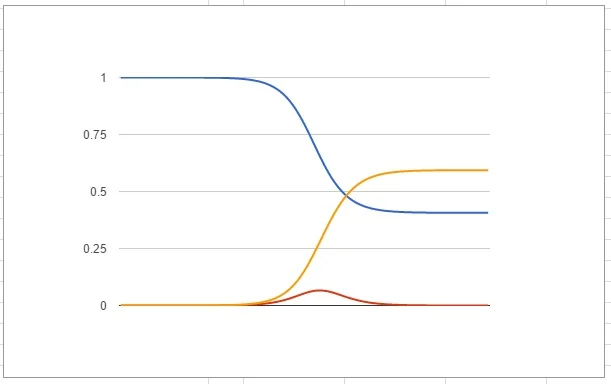What is a Second Cousin Once Removed?
Everyone seems to have a good hold on what we mean by the word cousin, but for more distant relatives people have a tendency to just guess and say terms like second cousin or once removed without really understanding them. In this article I'm going to explain what these terms mean and then we'll delve further into more exotic things like double cousins.
First off, let's have a tree which we can refer to. I was going to use Harry Potter for this (Harry and Ginny are third cousins by the way), but I couldn't find a nicely formatted one and everyone in it is too divided into neat generations which didn't show all of the features that I wanted. Lord of the Rings was too complicated and Game of Thrones didn't go back far enough. So instead I've just made up a family:
Black for Males, Green for Females.
Ok, first off let's define cousin (i.e. a first cousin) properly. Your cousin is someone who shares a grandparent with you. I.e. you have to count back two generations to get to your common ancestor. On the tree above H and P are first cousins because they share the grandparents A and B.
A second cousin is someone who shares a great grandparent with you, so that person's common ancestor with you is 3 generations back. On the tree J and N are second cousins with one another because both share the great grandparents A and B.
This pattern continues, so an nth cousin is someone who shares a common ancestor with you n+1 generations before. Harry and Ginny who we mentioned before share a great great grandparent (Phineas Nigellus Black and Ursula Flint).
Well this is all well and good if you are comparing people of the same generation, but what happens if they are on different levels of the family tree? The idea is that you count the shortest path to the common ancestor as the nth cousin bit, and how many generations difference between the two people as how many times removed you are.
Let's compare the married couple M and N to see what relation they are to each other. Well their common ancestors are A and B. For M this is 4 generations back, but for N this is only 3. We take the shorter of the two, so 3 generations back means that they are some kind of second cousin. The difference between their generations is 1, so they are second cousins once removed.
But let's go further. You can fit pretty much anyone in your family into the mth cousin n times removed model. For instance D is P's Aunt, but what sort of cousin are they? Well the common ancestors are A and B, which by the shortest route is only one generation away. Taking one from this, we get that they are zeroth cousins, and because they are one generation away from each other, they are zeroth cousins once removed. You now have a nice gender neutral term for Aunts and Uncles (and Nieces and Nephews for that matter).
How about your relationship with your mother? Well the nearest common ancestor is your mother herself, which is 0 generations back; so you are minus oneth cousins once removed.
What relation are you to yourself? Simply your minus oneth cousin. This system is so versatile!
A useful property of this system is that it is commutative. So if you are someone's 5th cousin 3 times removed, then they are your 5th cousin 3 times removed as well. Since you can define everyone in our family by 2 numbers it means that you could plot them on a Cartesian Graph. Everyone at coordinate (m,n) will share exactly the same amount of DNA with you, specifically (1/2)^(2m+n+2). Try it out, it will give you 1 for yourself, 1/2 for your child etc.
Ok, now let's do double cousins. A double cousin is someone who is your first cousin in two different ways. On the tree above 1 and 2 are double cousins. The two sisters S and T from the Red family married the two brothers O and P from the Black family and each bore a child, 1 and 2. This is the closest relation you are allowed to marry in the UK, even though their child, 3, would only have half the ordinary number of great grandparents. Normally cousins share 1/16 of their DNA, double cousins share 1/8 which makes them as close genetically as your Aunt is to you.







